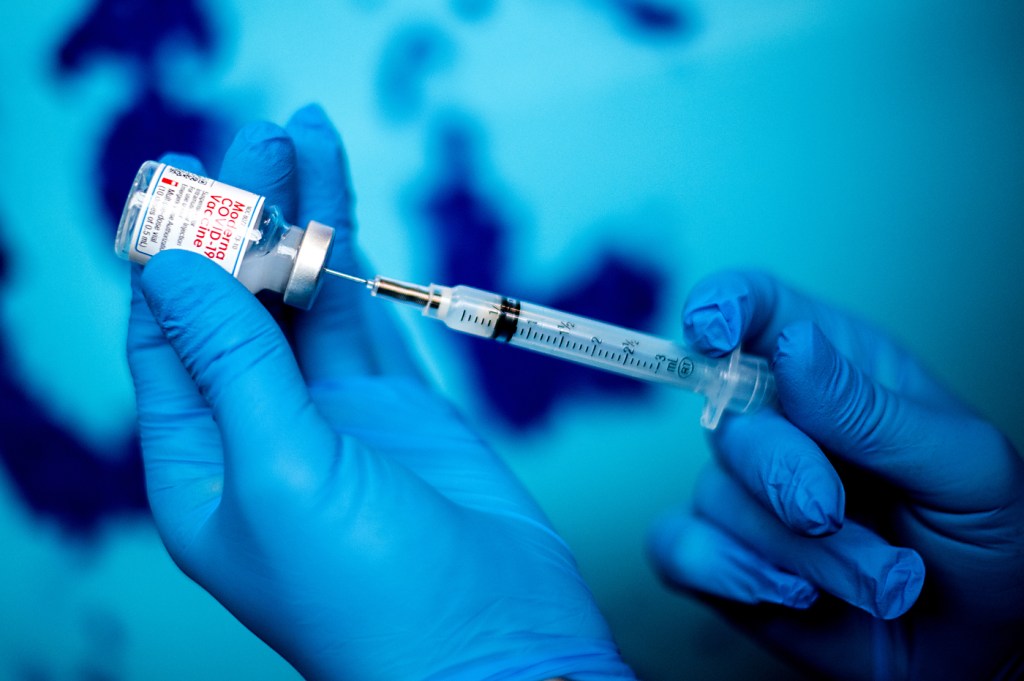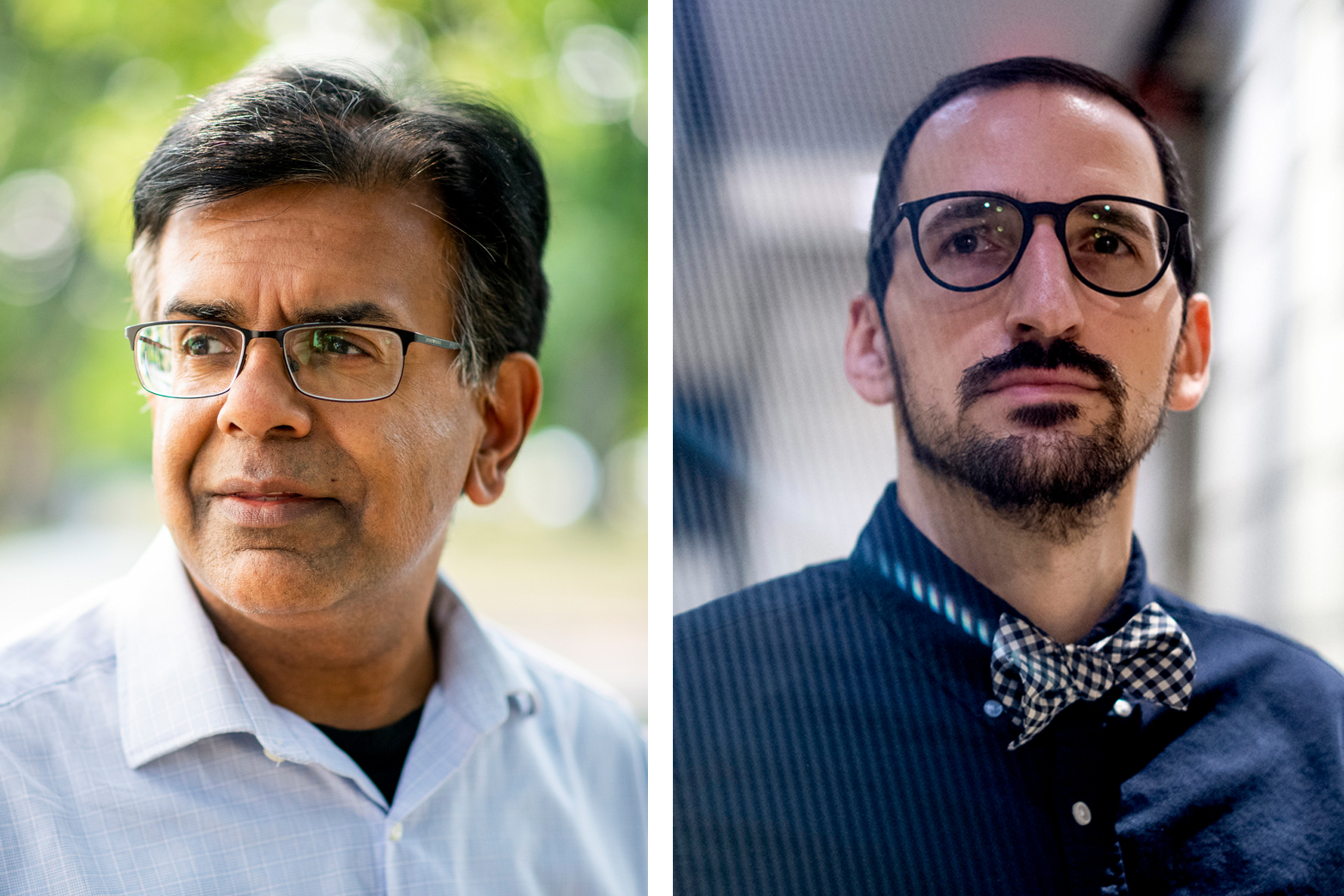Changing vaccine dosage is risky without clinical trials, experts say

People in the United States were promised 20 million COVID-19 vaccinations by the end of 2020. One week into the new year, just over 5 million people across the nation have received their first dose, and hundreds of expired doses have been thrown away.
The botched vaccine rollout, coupled with soaring demand as cases rise, has forced public health agencies around the world to consider other options for maximizing the doses available. Some have considered reducing the number of doses, extending the length of time between doses, cutting the dose in half, or mixing and matching vaccines in order to immunize more people against COVID-19.

Left to right: Mansoor Amiji, university distinguished professor of pharmaceutical sciences and chemical engineering, and Brandon Dionne, assistant clinical professor in the School of Pharmacy agree that changes to vaccine administration protocols shouldn’t be made without clinical trial evidence to support it. Photos by Matthew Modoono/Northeastern University
But no clinical trials have been completed to test the efficacy of these propositions. And changing the vaccine administration requirements without supportive evidence is a bad idea, says Mansoor Amiji, university distinguished professor of pharmaceutical sciences and chemical engineering at Northeastern.
“That’s not how the scientific process works,” Amiji says. “If you are changing any factors that weren’t studied in the clinical trial, you are negating the results.”
Still, many countries are taking steps already to change their vaccine protocols. The United Kingdom recently changed its vaccine guidelines to allow a mixing of different companies’ vaccines. The country’s guidelines state that “every effort should be made” to complete a dosing regimen with the same shot first used. But when “the same vaccine is not available, or if the first product received is unknown, it is reasonable to offer one dose of the locally available product” the second time around.
In the U.S., the Food and Drug Administration is considering splitting one dose of the Moderna vaccine into two shots for people ages 18 to 55 with no comorbidities.
“We know [the half dose] induces identical immune response to the hundred microgram dose and therefore we are in discussion with Moderna and with the FDA,” said Moncef Slaoui, the head of the government’s Operation Warp Speed program, on CBS’s “Face the Nation” on Sunday.
Brandon Dionne, an assistant clinical professor in the School of Pharmacy at Northeastern, warns against changing these guidelines, as well.
“I wouldn’t advise either of these, the half dose or the mix-matched doses, without seeing the clinical trial evidence,” he says.
The U.K. is currently administering the Pfizer vaccine, an mRNA vaccine, and the AstraZeneca vaccine, a viral vector vaccine. Both immunizations prime the body to recognize and attack the virus’s spike proteins, the mechanisms the virus uses to enter and infect cells, so theoretically these two vaccines could work together, Dionne says.
“But we don’t know to what degree this would be effective, if at all,” he continues.
While this cocktail of vaccines probably wouldn’t be directly harmful, it could negate any potential protection from COVID-19. “Worst case scenario, the doses wouldn’t be effective,” Dionne says. “But that could give people a false sense of security, which could lead them to engage in harmful behaviors.”
As for half doses, “Younger people tend to have a stronger immune response. We have some immunological data from other vaccines that shows lower doses may create an adequate response in younger patients, but there’s no way to know without testing it,” he says.
For flu vaccines, for example, elderly people may be given four times the dose of antigen. “The difference with the flu vaccine is that we’re giving a higher dose to older patients to achieve a similar response rather than giving a lower dose to younger patients,” he says. “These higher doses were also studied in clinical trials.”
Another thing to consider is that the only people receiving the vaccine right now are those at the highest risk. “Those are not the types of patients that you want to give half doses to,” Dionne says. “And by the time we get to mass rollout of the vaccines, we may have enough. It may not be an issue that you need to give half doses to expand access.”
More importantly though, Amiji believes these propositions to change vaccine administration are trying to solve the wrong problem.
“We need to identify where the bottlenecks are,” he says. “The problem is in the later stages of distribution. The syringe isn’t getting into the arm. So the solution shouldn’t be to dilute the doses or mix and match them. It should be to train more people to administer the vaccine.”
Plus, receiving conflicting information about the vaccine could push some vaccine-hesitant people over the edge to full rejection of the immunization, Amiji says. “We already have a problem with levels of confidence in the vaccine,” he says. “When you introduce these unknown variables into the paradigm, mixing and matching vaccines or cutting the dose, that confidence level could drop down even further.”
For media inquiries, please contact Jessica Hair at j.hair@northeastern.edu or 617-373-5718.





